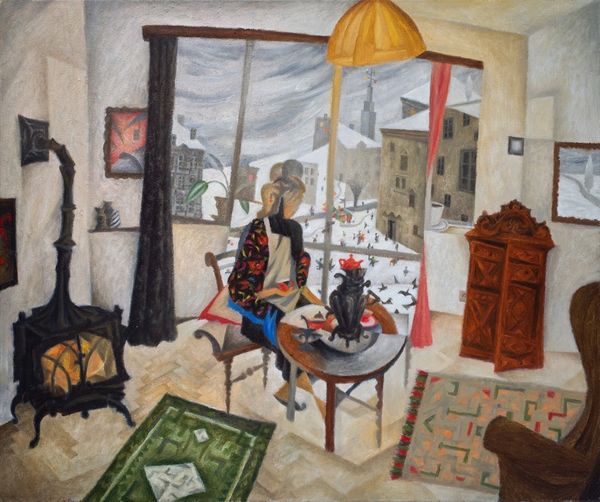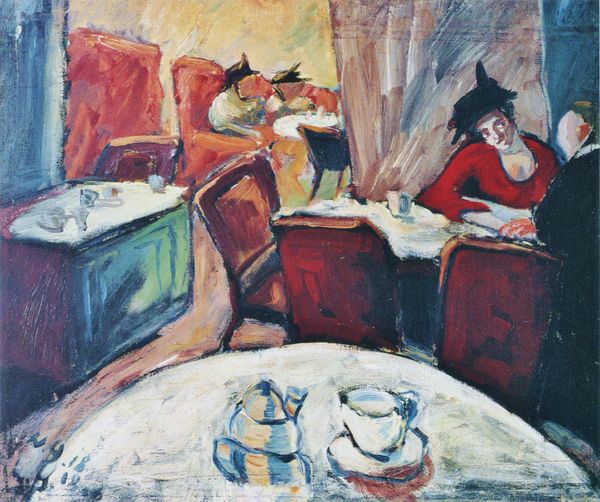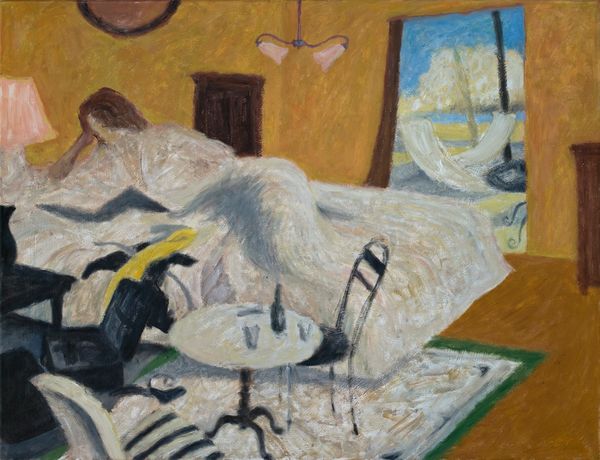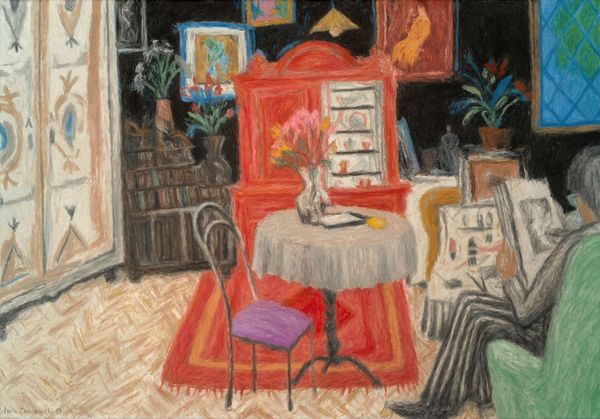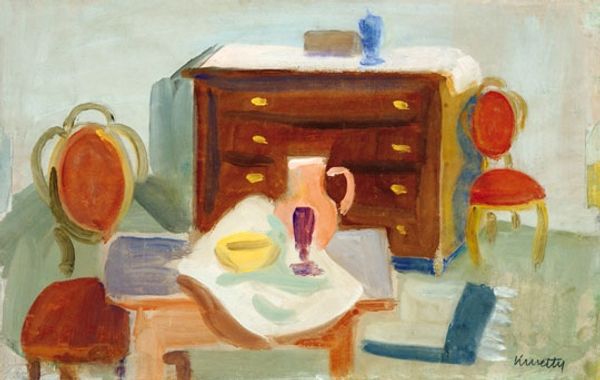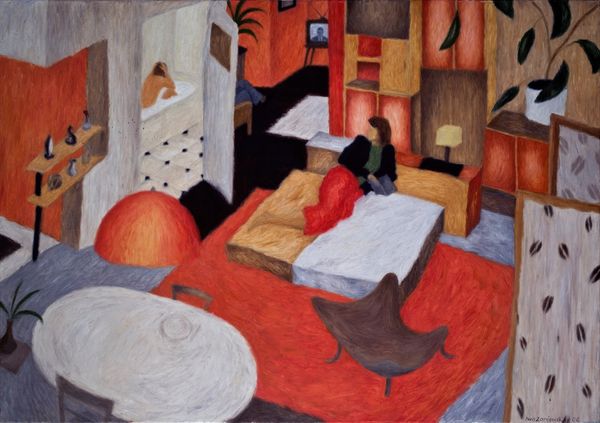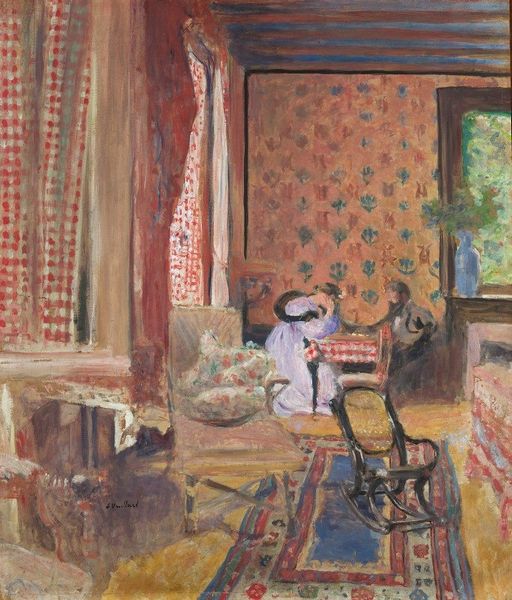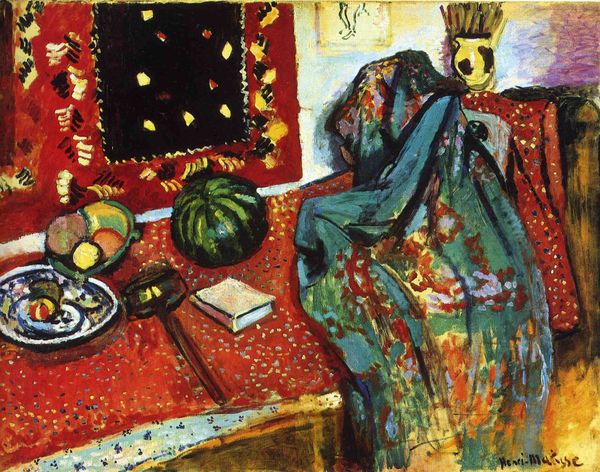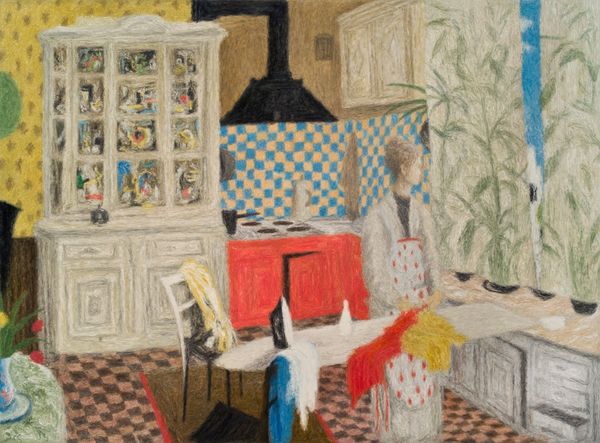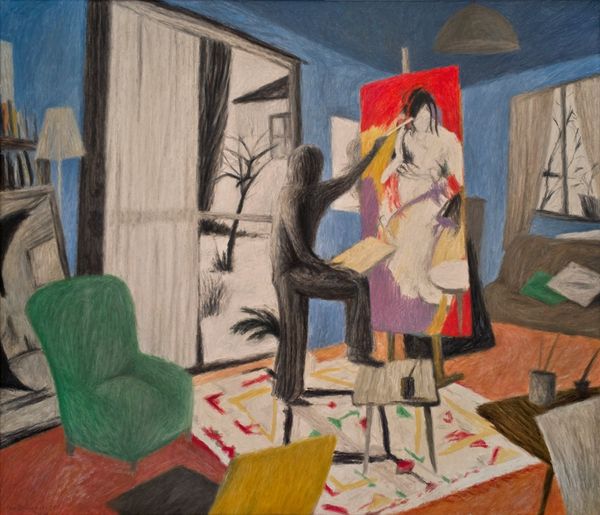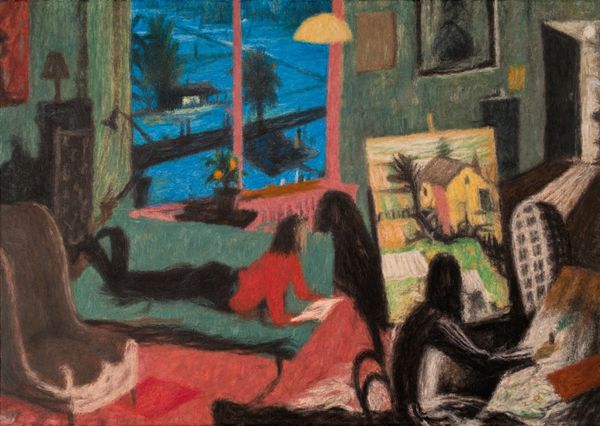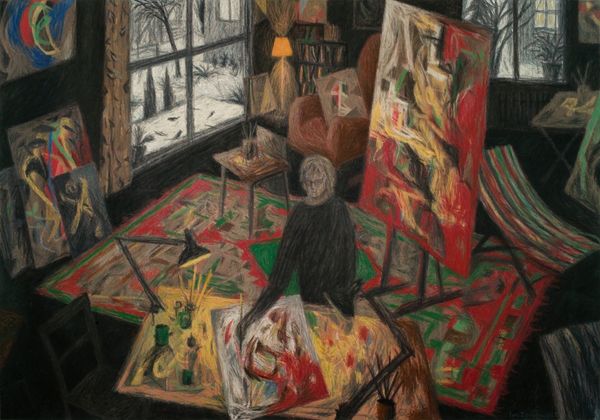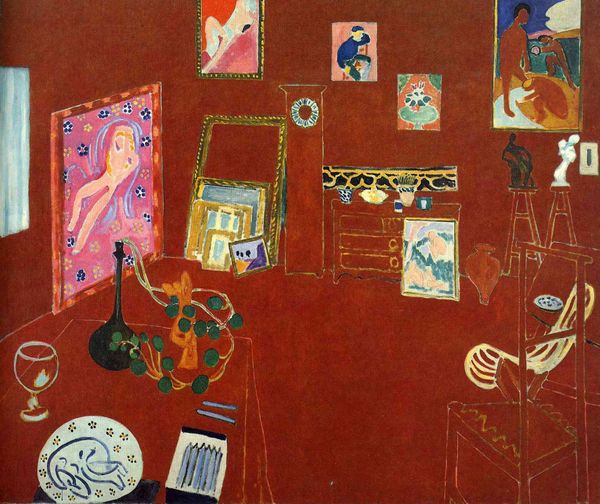
Copyright: Philip Evergood,Fair Use
Curator: Today we're looking at Philip Evergood's "Untitled (Interior with Man at Table)," painted in 1932 using oil on canvas. Editor: It's strikingly unsettling. There’s a gloominess that almost feels claustrophobic, despite the window looking out onto a city street. Curator: The domestic scene, juxtaposed with the external world, generates that tension you perceive. The painting style nods towards expressionism, which could amplify the angst you describe, too. There's also a naivete, especially in the composition and colour choices. Do you see a symbolic narrative at play? Editor: Absolutely. Look at the man – the figure slumped in a chair, appearing weary or defeated, contrasted against the vibrancy of the fruit bowl. Perhaps a comment on the socio-economic disparities of the time? The headline in the background might hold more clues. Curator: Notice the newspaper; "World trade plunges...dollar..." The weight of external economic realities seems to permeate this personal space. Then we consider the interior objects—a cut fruit bowl, a glass and spritzer bottle, what narratives are they constructing for the domesticity here? What are we really seeing? Editor: Right. Even the colours clash a bit. The playful geometric patterns under the fruit, the subdued mauves and oranges in the furniture, it makes me wonder if Evergood is illustrating a fractured American Dream during the Depression. Or is he alluding to a larger systemic dysfunction, one where individual comfort masks collective distress? Curator: Consider too the man's visual positioning. Is his proximity and angle, relative to the objects on the table and in view, a reflection of what's on his mind? The gaze directed almost nowhere specific... what does this evoke, viscerally, as it repeats again and again throughout social life at the time? What larger message is there? Editor: That is indeed an astute observation. The deliberate awkwardness forces us to acknowledge the hidden disquietude behind idealized images. Evergood uses the intimate setting to reflect broader cultural and economic realities. It all becomes more political than at first glance, doesn't it? Curator: It's clear, in viewing the work, how private despair emerges under public precarity, making us recognize this is not simply a portrait, but also a stark mirror. Editor: Definitely, "Untitled" is a potent reminder that art isn't just aesthetic; it's a historical and political record—a challenge to complacent narratives and cultural symbols.
Comments
No comments
Be the first to comment and join the conversation on the ultimate creative platform.
